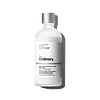What's inside
What's inside
 Key Ingredients
Key Ingredients

No key ingredients
 Benefits
Benefits

 Concerns
Concerns

No concerns
 Ingredients Side-by-side
Ingredients Side-by-side

Water
Skin Conditioning1,2-Hexanediol
Skin ConditioningPanthenol
Skin ConditioningLimnanthes Alba Seed Oil
Skin ConditioningEthylhexylglycerin
Skin ConditioningSodium Hyaluronate
HumectantDipropylene Glycol
HumectantSphingolipids
EmollientButylene Glycol
HumectantCeramide NP
Skin ConditioningPolyglutamic Acid
Skin ConditioningSaccharide Isomerate
HumectantGluconolactone
Skin ConditioningBeta-Glucan
Skin ConditioningPullulan
Xanthan Gum
EmulsifyingGlycerin
HumectantCarbomer
Emulsion StabilisingTocopherol
AntioxidantCitric Acid
BufferingTromethamine
BufferingSodium Citrate
BufferingSymphytum Officinale Root Extract
Skin ConditioningSodium Phytate
Methyl Glucose Sesquistearate
EmollientHydrogenated Lecithin
EmulsifyingCetearyl Glucoside
EmulsifyingPolyglyceryl-3 Methylglucose Distearate
EmulsifyingCentella Asiatica Extract
CleansingWater, 1,2-Hexanediol, Panthenol, Limnanthes Alba Seed Oil, Ethylhexylglycerin, Sodium Hyaluronate, Dipropylene Glycol, Sphingolipids, Butylene Glycol, Ceramide NP, Polyglutamic Acid, Saccharide Isomerate, Gluconolactone, Beta-Glucan, Pullulan, Xanthan Gum, Glycerin, Carbomer, Tocopherol, Citric Acid, Tromethamine, Sodium Citrate, Symphytum Officinale Root Extract, Sodium Phytate, Methyl Glucose Sesquistearate, Hydrogenated Lecithin, Cetearyl Glucoside, Polyglyceryl-3 Methylglucose Distearate, Centella Asiatica Extract
 Reviews
Reviews

Ingredients Explained
These ingredients are found in both products.
Ingredients higher up in an ingredient list are typically present in a larger amount.
Citric Acid is an alpha hydroxy acid (AHA) naturally found in citrus fruits like oranges, lemons, and limes.
Like other AHAs, citric acid can exfoliate skin by breaking down the bonds that hold dead skin cells together. This helps reveal smoother and brighter skin underneath.
However, this exfoliating effect only happens at high concentrations (20%) which can be hard to find in cosmetic products.
Due to this, citric acid is usually included in small amounts as a pH adjuster. This helps keep products slightly more acidic and compatible with skin's natural pH.
In skincare formulas, citric acid can:
While it can provide some skin benefits, research shows lactic acid and glycolic acid are generally more effective and less irritating exfoliants.
Most citric acid used in skincare today is made by fermenting sugars (usually from molasses). This synthetic version is identical to the natural citrus form but easier to stabilize and use in formulations.
Read more about some other popular AHA's here:
Learn more about Citric AcidSodium Citrate is the sodium salts of citric acid. In skincare, it is used to alter pH levels and acts as a preservative.
Its main functions are to maintain the pH of a product and neutralize metal ions.
The acidity of our skin is maintained by our glands and skin biome; normal pH level of skin is slightly acidic (~4.75-5.5).
Being slightly acidic allows our skin to create an "acid mantle". This acid mantle is a thin barrier that protects our skin from bacteria and contaminants.
Learn more about Sodium CitrateWater. It's the most common cosmetic ingredient of all. You'll usually see it at the top of ingredient lists, meaning that it makes up the largest part of the product.
So why is it so popular? Water most often acts as a solvent - this means that it helps dissolve other ingredients into the formulation.
You'll also recognize water as that liquid we all need to stay alive. If you see this, drink a glass of water. Stay hydrated!
Learn more about Water